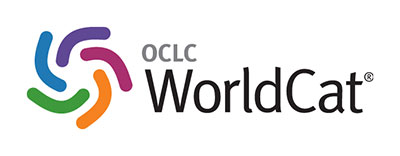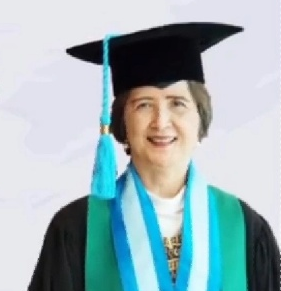The Effect of Oral Andrographolide on Cardiac Biomarkers in Doxorubicin-induced Rats
DOI:
https://doi.org/10.28932/jmh.v5i2.5026Keywords:
doxorubicin, andrographolide, LDH, CK-MBAbstract
Doxorubicin remains the most prescribed anticancer agent despite its unintended side effects on non-target organs. A limiting-dose strategy is used to lower incidence of cardiotoxicity. Andrographolide has therapeutic effects including antioxidant and anti-inflammatory. This study aimed to assess cardioprotective effects of andrographolide oral on lactate dehydrogenase (LDH), creatine kinase-myocardial band (CK-MB), and relative cardiac weight in doxorubicin-induced rats. Sixteen male rats Sprague Dawley randomized into four groups: receives saline i.p and vehicle orally (Normal), doxorubicin 16 mg/kgBW i.p and vehicle orally (Dox), doxorubicin 16 mg/kgBW i.p+andrographolide 30 mg/kgBW orally (Dox+And30), doxorubicin 16 mg/kgBW i.p+andrographolide 60 mg/kgBW orally (Dox+And60). Blood was collected via cardiac puncture and cardiac organs were weighed after four-weeks administration. Total LDH and CK-MB measured spectrophotometrically. LDH and CK-MB levels significantly elevated, and signs of acute toxicity in Dox group compared with Normal group. Co-treatment with andrographolide at 30 mg/kgBW and 60 mg/kgBW reduced signs of toxicity and significantly attenuated LDH and CK-MB levels compared with Dox group (P<0.05 and P<0.01). However, body weight and relative cardiac weight were not significantly different in all groups after co-treatment with andrographolide. In conclusion, andrographolide lowered LDH and CK-MB levels, therefore has a protective potency in alleviating toxic effects of doxorubicin.Downloads
References
World Cancer Report 2014: Cancer Research for Cancer Prevention. Lyon, France: International Agency for Research on Cancer. ISBN-13978-92-832-0429-9
Meredith AM, Dass CR. Increasing role of the cancer chemotherapeutic doxorubicin in cellular metabolism. J Pharm Pharmacol. 2016;68(6):729–41.
Hiensch AE, Bolam KA, Mijwel S, Jeneson JAL, Huitema ADR, Kranenburg O, et al. Doxorubicin-induced skeletal muscle atrophy: Elucidating the underlying molecular pathways. Acta Physiol (Oxf). 2020;229(2):e13400.
Liesse K, Harris J, Chan M, Schmidt ML, Chiu B. Dexrazoxane significantly reduces anthracycline-induced cardiotoxicity in pediatric solid tumor patients-a systematic review. J Pediatr Hematol Oncol. 2018;40:417..
Ganatra S, Nohria A, Shah S, Groarke JD, Sharma A, Venesy D, Patten R, Gunturu K, Zarwan C, Neilan TG. Upfront dexrazoxane for the reduction of anthracycline-induced cardiotoxicity in adults with preexisting cardiomyopathy and cancer: a consecutive case series. Cardio-oncology. 2019;5:1–12.
Dhingra R, Margulets V, Kirshenbaum LA. Chapter 2 - Molecular Mechanisms Underlying Anthracycline Cardiotoxicity: Challenges in Cardio-Oncology. In: Gottlieb RA, Mehta PKBTCO, editors. Boston: Academic Press; 2017. p. 25–34.
Rawat PS, Jaiswal A, Khurana A, Bhatti JS, Navik U. Doxorubicin-induced cardiotoxicity: An update on the molecular mechanism and novel therapeutic strategies for effective management. Biomed Pharmacother. 2021;139:111708.
Pilco-Ferreto, N., Calaf, G. M. Influence of doxorubicin on apoptosis and oxidative stress in breast cancer cell lines. Int J Oncol. 2016; 49(2):753–762.
Tadokoro T, Ikeda M, Ide T, Deguchi H, Ikeda S, Okabe K, et al. Mitochondria-dependent ferroptosis plays a pivotal role in doxorubicin cardiotoxicity. JCI insight. 2020;5(9): e132747.
Ma Y, Yang L, Ma J, Lu L, Wang X, Ren J, et al. Rutin attenuates doxorubicin-induced cardiotoxicity via regulating autophagy and apoptosis. Biochim Biophys acta Mol basis Dis. 2017;1863(8):1904–11.
Duan MX, Zhou H, Wu QQ, Liu C, Xiao Y, Deng W, et al. Andrographolide Protects against HG-Induced Inflammation, Apoptosis, Migration, and Impairment of Angiogenesis via PI3K/AKT-eNOS Signalling in HUVECs. Mediators Inflamm. 2019;2019:6168340.
Xie S, Deng W, Chen J, Wu QQ, Li H, Wang J, et al. Andrographolide Protects Against Adverse Cardiac Remodeling After Myocardial Infarction through Enhancing Nrf2 Signaling Pathway. Int J Biol Sci. 2020;16(1):12–26.
Feng E, Shen K, Lin F, Lin W, Zhang T, Zhang Y, et al. Improved osteogenic activity and inhibited bacterial biofilm formation on andrographolide-loaded titania nanotubes. Ann Transl Med. 2020;8(16):987.
Zhao Y, Wang M, Li Y, Dong W. Andrographolide attenuates viral myocarditis through interactions with the IL-10/STAT3 and P13K/AKT/NF-KB signaling pathways. Exp Ther Med. 2018;16(3):2138–43.
Chen HW, Huang CS, Li CC, Lin AH, Huang YJ, Wang TS, et al. Bioavailability of andrographolide and protection against carbon tetrachloride-induced oxidative damage in rats. Toxicol Appl Pharmacol. 2014;280(1):1–9.
Wu QQ, Ni J, Zhang N, Liao HH, Tang QZ, Deng W. Andrographolide Protects against Aortic Banding-Induced Experimental Cardiac Hypertrophy by Inhibiting MAPKs Signaling. Front Pharmacol. 2017;8:808:1-17.
Kristjansson RP, Oddsson A, Helgason H, Sveinbjornsson G, Arnadottir GA, Jensson BO, et al. Common and rare variants associating with serum levels of creatine kinase and lactate dehydrogenase. Nat Commun. 2016;7:10572.
Arozal W, Suyatna FD, Juniantito V, Rosdiana DS, Amurugam S, Aulia R, et al. The Effects of Mangiferin (Mangifera indica L) in Doxorubicin-induced Cardiotoxicity in Rats. Drug Res (Stuttg). 2015;65(11):574–80.
Chen T, Shen HM, Deng ZY, Yang ZZ, Zhao RL, Wang L, et al. A herbal formula, SYKT, reverses doxorubicin-induced myelosuppression and cardiotoxicity by inhibiting ROS-mediated apoptosis. Mol Med Rep. 2017;15(4):2057–66.
Osataphan N, Phrommintikul A, Chattipakorn SC, Chattipakorn N. Effects of doxorubicin-induced cardiotoxicity on cardiac mitochondrial dynamics and mitochondrial function: Insights for future interventions. J Cell Mol Med. 2020;24(12):6534–57. 65.
Fernando A, Gatot D, Indra Y, Sitepu F. The Differences of Myelosuppression before and after Doxorubicin Chemotherapy in Breast Cancer Patients in Rsup. H. Adam Malik Medan. Website www.ijrrjournal.com Orig Res Artic Int J Res Rev [Internet]. 2021 [cited 2023 Feb 06];8(7):18. Available from: https://doi.org/10.52403/ijrr.20210704
Zilinyi R, Czompa A, Czegledi A, Gajtko A, Pituk D, Lekli I, et al. The Cardioprotective Effect of Metformin in Doxorubicin-Induced Cardiotoxicity: The Role of Autophagy. Molecules. 2018;23(5):1184.
Afsar T, Razak S, Batoo KM, Khan MR. Acacia hydaspica R. Parker prevents doxorubicin-induced cardiac injury by attenuation of oxidative stress and structural Cardiomyocyte alterations in rats. BMC Complement Altern Med. 2017;17(1):554.
Liao D, Zhang C, Liu N, Cao L, Wang C, Feng Q, et al. Involvement of neurotrophic signaling in doxorubicin-induced cardiotoxicity. Exp Ther Med. 2020;19(2):1129–35.
Mondal M, Sarkar C, Saha S, Hossain MN, Norouzi N, Mubarak MS, et al. Hepatoprotective activity of andrographolide possibly through antioxidative defense mechanism in Sprague Dawley rats. Toxicol Rep. 2022;9:1013-1022.
Cabrera D, Gutierrez J, Cabello-Verrugio C, Morales MG, Mezzano S, Fadic R, et al. Andrographolide attenuates skeletal muscle dystrophy in mdx mice and increases efficiency of cell therapy by reducing fibrosis. Skelet Muscle. 2014;4:6.
Wong SK, Chin KY, Ima-Nirwana S. A review on the molecular basis underlying the protective effects of Andrographis paniculata and andrographolide against myocardial injury. Drug Des Devel Ther. 2021;15:4615-4632.
Shah SMA, Akram M, Riaz M, Munir N, Rasool G. Cardioprotective Potential of Plant-Derived Molecules: A Scientific and Medicinal Approach. Dose Response. 2019;17(2):1559325819852243.
Guan SP, Tee W, Ng DS, et al. Andrographolide protects against cigarette smoke-induced oxidative lung injury via augmentation of Nrf2 activity. Br J Pharmacol. 2013;168(7):1707-18.
Burgos RA, Alarcon P, Quiroga J, Manosalva C, Hancke J. Andrographolide, an Anti-Inflammatory Multitarget Drug: All Roads Lead to Cellular Metabolism. Molecules. 2020;26(1):5.
Tan WSD, Liao W, Zhou S, Wong WSF. Is there a future for andrographolide to be an anti-inflammatory drug? Deciphering its major mechanisms of action. Biochem Pharmacol. 2017;139:71–81.
Lingappan K. NF-KB in Oxidative Stress. Curr Opin Toxicol. 2018;7:81–6.
Downloads
Published
How to Cite
Issue
Section
License
Copyright (c) 2023 Silmi Hanifah, Wawaimuli Arozal, Vetnizah Juniantito

This work is licensed under a Creative Commons Attribution-NonCommercial 4.0 International License.
Authors who publish with this journal agree to the following terms:
- Authors retain the copyright and grant the journal right of first publication with the work
simultaneously licensed under a Creative Commons Attribution-NonCommercial 4.0 International License that allows others to share the work with an acknowledgement of the work's authorship and initial publication in this journal. - Authors are able to enter into separate, additional contractual arrangements for the nonexclusive distribution of the journal's published version of the work (e.g., post it to an institutional repository or publish it in a book), with an acknowledgement of its initial publication in this journal.
 This work is licensed under a Creative Commons Attribution-NonCommercial 4.0 International License.
This work is licensed under a Creative Commons Attribution-NonCommercial 4.0 International License.

















